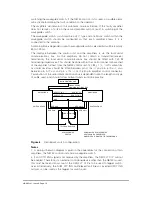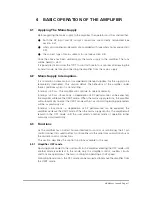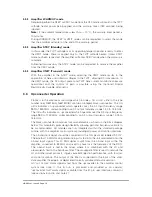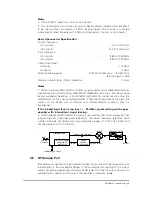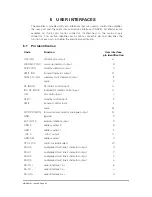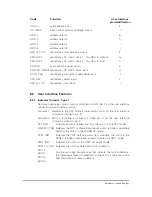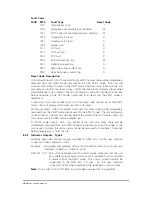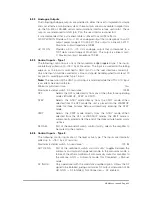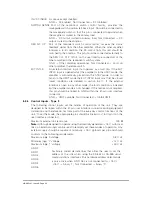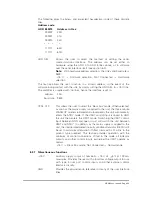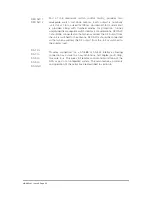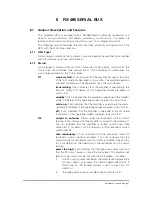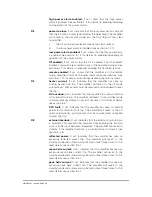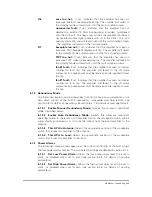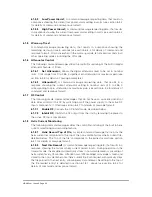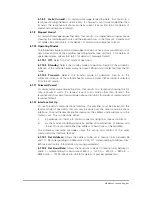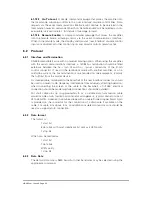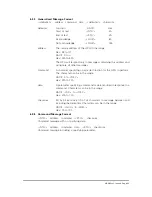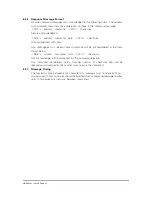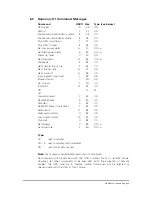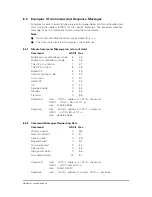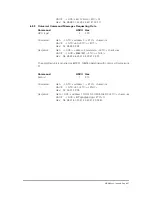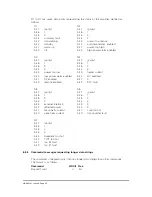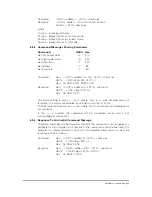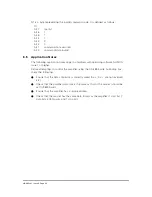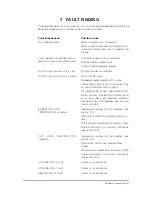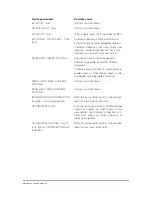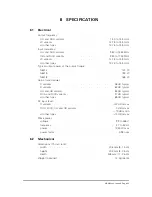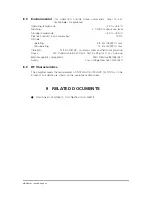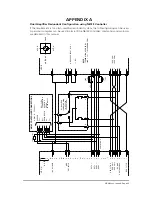
6.1.4.3
Low Power Alarm?;
A command message requesting data, that results in
a response showing the current low power alarm setting in watts (see section 6.4.2
for details of command and response format).
6.1.4.4
High Power Alarm?;
A command message requesting data, that results
in a response showing the current low power alarm setting in watts (see section 6.4.2
for details of command and response format).
6.1.5
Warm-up Time?
A command message requesting data, that results in a response showing the
remaining warm-up time in seconds (see section 6.4.2 for details of command and
response format). Only active when in the warm-up mode, returns zero seconds in all
other operating modes including the off mode.
6.1.6
Attenuator Control
The following command messages allow the control/monitoring of the built in digital
attenuator feature, if fitted.
6.1.6.1
Set Attenuator;
Allows the digital attenuator level to be set in nominal
units. Units range from 0 to 255, 0 signifies zero attenuation or maximum gain (see
section 6.4.5 for details of passing parameters).
6.1.6.2
Attenuator?;
A command message requesting data, that results in a
response showing the current attenuator setting in nominal units of 0 to 255, 0
corresponding to zero attenuation or maximum gain (see section 6.4.2 for details of
command and response format).
6.1.7
RF Control
The following simple command messages that do not have an associated return of
data allow control of the RF by switching on/off the power supply to the active RF
input components, if fitted (see section 6.4.1 for details of message format).
6.1.7.1
Enable RF;
Cancels the RF inhibit mode, described below.
6.1.7.2
Inhibit RF;
Inhibits the RF output from the unit by removing the power to
the active RF input components.
6.1.8
Helix Current Monitoring
The following command messages allow the control/monitoring of the built in helix
current monitoring and recording feature.
6.1.8.1
Helix Record Top of File;
A simple command message that returns the
helix current record pointer to the top of the non-volatile historical helix current file,
detailed below. The ‘top of the file’ corresponds to the earliest record (see section
6.4.1 for details of message format).
6.1.8.2
Next Ihlx Record?;
A command message requesting data, that results in a
response showing the historical helix current record in mA. During operation in the
transmit mode, the amplifier automatically stores in non-volatile memory a reading of
helix current every 15 minutes. After 50 hours (200 readings) an average is taken and
stored to the non-volatile historical helix current file. Each request automatically steps
the file pointer to the next entry, allowing easy data retrieval. Resetting to the top of
the file (earliest entry) is detailed in section 6.1.8.1, above (see section 6.4.2 for
details of command and response format).
HBN63xx-1, Issue 8, Page 30

